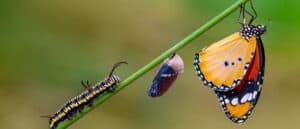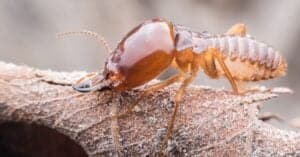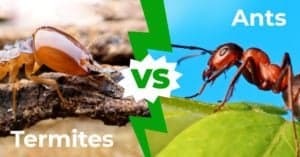Just hearing the word “termites” is enough to make homeowners wince. The insects are notorious for eating the cellulose from wood, causing expensive structural damage to homes and other buildings in the process. Yet, it’s easy to mistake termites for other insects, especially flying ants. Part of the reason that termites may be hard to identify is that members of the same species can look and act differently. That’s why we’re going to ask the question: Can termites fly?
An examination of their flight abilities will lead to a more in-depth view of these critters.
Do All Termites Fly?
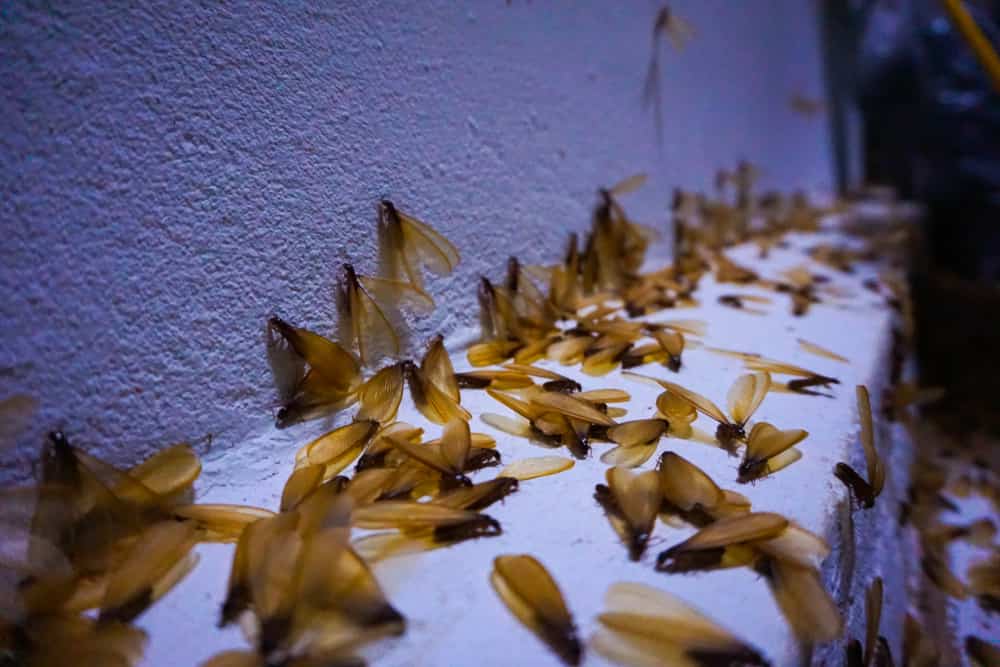
Termites called “swarmers” can fly.
©Panomluttikorn Junsiri/Shutterstock.com
Termites can fly, but not all of them. The majority of termites are wingless, ground-dwelling insects known for living in large colonies. They can nest in soil or form colonies in dry wood. There are thousands of species of termites, and they are long-lived compared to many other insects.
Termites are divided into three distinct groups, also called castes. The castes are the soldiers, the workers, and the reproductive termites. Every cast fulfills a need for the colony. Worker termites care for the young, forage for food, and develop new tunnels. About 90% to 94% of the termites in a colony are workers.
Soldiers make up anywhere from 2% to 4% of the termites in a colony. These creatures as tasked with defending the colonies from attackers, like other insects. The vast majority of termites in a colony, soldiers and workers, lack eyes and wings. Those termites don’t fly.
Instead, the reproductive caste has wings. These are the least numerous termites in a colony making up as few as 2% of the colony. Reproductive termites grow wings as they reach sexual maturity. Then, they leave the colony in a group as a swarm to pair up and start a new colony. The termites that have wings are also called alates.
So, only the reproductive caste termites fly. After the primary reproducers pair up and start a new colony, they shed their wings. Thus, the ability to fly is a temporary quality of termites. The colony does not only have a single pair of reproducers in many cases, though. Secondary and even tertiary reproductive termites can exist in a colony.
All of this information is very general so as not to mischaracterize the creatures, but it should provide an overview of the insects.
Why People Worry When They See Flying Termites

Termite droppings are a sure sign that the insects are causing damage.
©iStock.com/lisatop
The implications of seeing flying termites are somewhat dire. After all, it means that termites are close by and that a large enough colony exists to send out reproducers. Furthermore, flying termites are looking for a place to nest, and that could be a nearby building like one’s home.
Not helping matters is that reproducers emerge from the colony in a swarm. A swirling, flying mass of termites will leave the colony in an attempt to find soil and establish their own settlement. This swarm is called the nuptial flight. The swarming reproducers either find a place to settle or die shortly after flying. These flights often happen at night, and that’s why termite swarms are often seen flying around streetlights.
Very few of the reproducers find a mate and start a colony. Still, breeding queens can lay thousands of eggs per day once they are completely mature. These insects can get a new colony together in short order. It doesn’t take long for that same colony to start wreaking havoc on wooden structures.
Oftentimes, homeowners will see evidence of the nuptial flight. They can find pairs of discarded wings or dead termites with more pigmentation than usual. Oftentimes, they’re found by windowsills where the insects tried to get outside from inside a building.
Flying Termites Don’t Always Mean You Have Termites
If a person finds a flying termite near their home, it doesn’t always mean they have an infestation. A wayward termite could accidentally fly toward a structure during the frenzied swarming dance. A solitary flying termite is not much to worry about.
The alates fly towards light sources, seek a mate, and then quickly run out of energy during the swarming event. If they’re inside a home, they may fly toward interior lights or windows. If a person finds several winged termites inside their house or sees a swarm on their property, then they may be in trouble.
At that point, it’s best to consult a pest control company. They can start identifying the termite nests and wiping them out before they do too much damage.
What Does a Flying Termite Look Like?
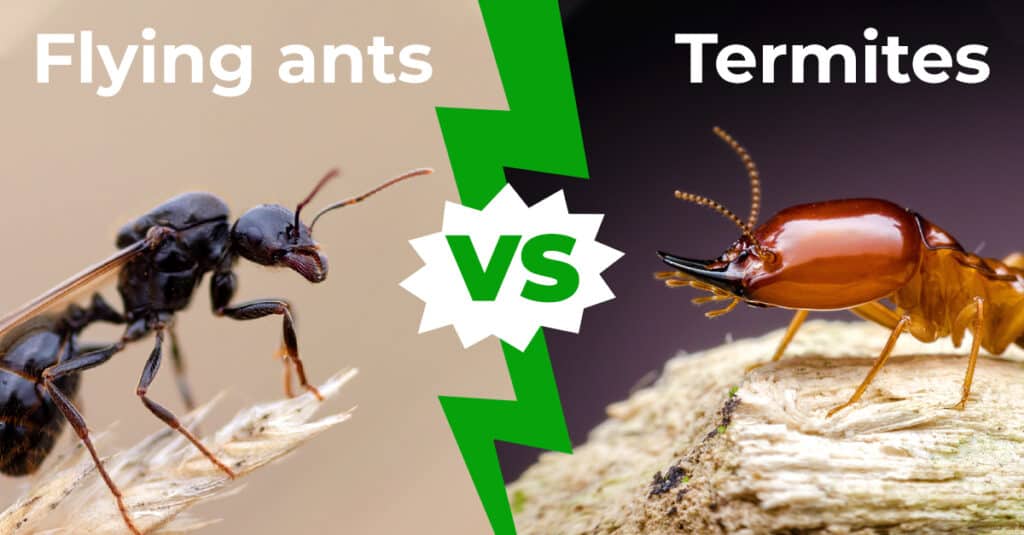
| Termite | Ant | |
|---|---|---|
| Antennae | Straight antennae | Antennae bent at an angle |
| Waist | Broad waist | Pinched, hourglass waist |
| Pigmentation | Can range in color from white, tan, and brown for flying termites | Mostly brown and black |
| Wings | – Has two sets of equal-sized wings – Sheds their wings | – Two sets of wings with larger forewings – Keeps their wings |
The first question concerned homeowners ask about flying insects that look like termites is, can termites fly? After that, they want to know what the insects look like. In this case, flying termites have a body that is distinct from other insects, like ants. They are soft-bodied creatures with straight antennae and a broad waist. Their waist is one of the easiest ways to differentiate them from ants.
Ants have a pinched, thin waist that makes their segmentation obvious, but termites have a much wider waist. Also, flying ants have bent antennae.
Also, termites only have six legs. Their bodies range in color from white color to brown. The alates have four wings that are roughly the same size, and they have darker pigmentation than other termites because they actually leave the colony and go outside.
Lastly, flying termites also shed their wings while flying ants do not. So, a long-lived swarm of flying insects is less likely to be termites.
Termites are invasive creatures that cause billions of dollars in damage to buildings and cost billions of dollars in treatments to contain and kill them. Spotting them can be difficult because they tend to live in the soil or inside of wood. Yet, swarms of flying termites are easier to spot. For the record, termites can fly, but they don’t fly for long. If someone spots an active swarm near their home, it’s a good idea to have pest control check their property for signs of termite damage. The sooner treatment starts, the better.
The photo featured at the top of this post is © Witsawat.S/Shutterstock.com
Thank you for reading! Have some feedback for us? Contact the AZ Animals editorial team.



